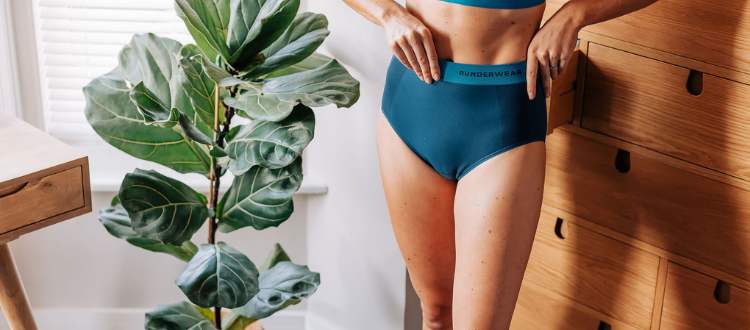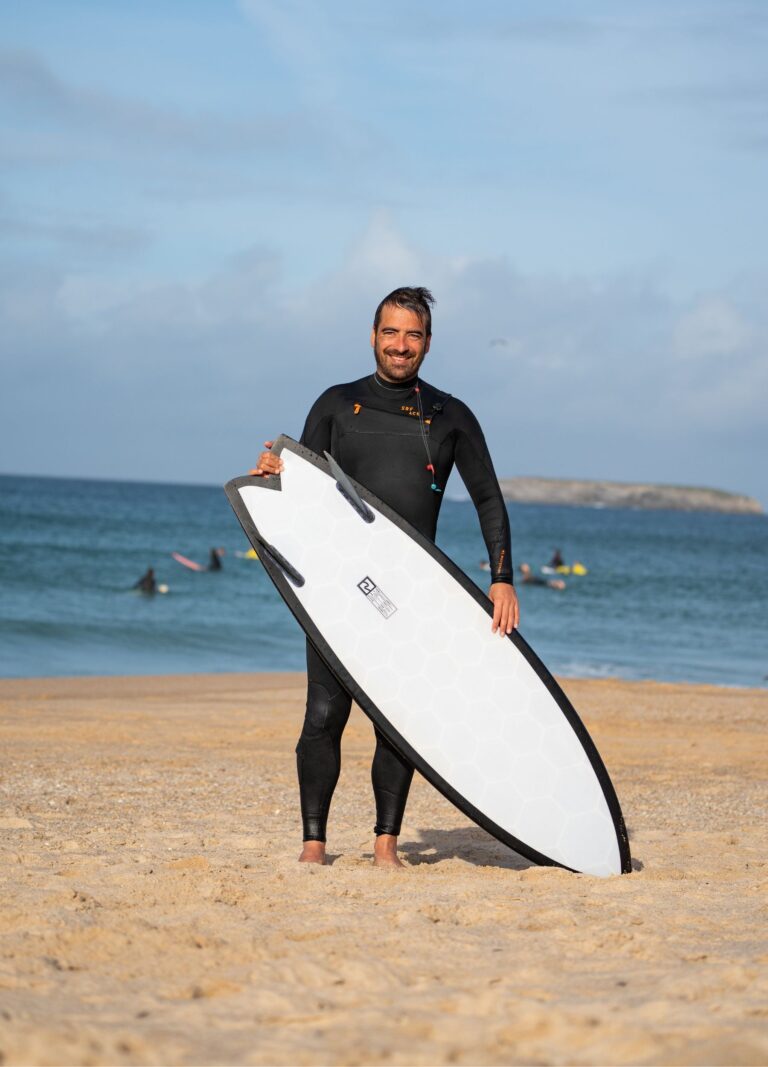When ice skating outdoors, it is important to wear warm and layered clothing to stay comfortable and protected from the elements. Ice skating outdoors can be a fun and exhilarating activity during the winter months.
However, to truly enjoy the experience, it is essential to dress appropriately for the cold weather. When choosing what to wear, it is important to focus on warmth and layering. Layering allows you to adjust your clothing according to your body temperature and the weather conditions.
Start with a moisture-wicking base layer that will keep you dry and comfortable. Add a warm insulating layer, such as a sweater or fleece, to trap in heat. Finally, protect yourself from the wind and moisture with a waterproof and windproof outer layer.
Don’t forget to wear thick socks, gloves, and a hat to keep your extremities warm. By following these guidelines, you can enjoy your ice skating adventure while staying cozy and protected.
Dressing For Warmth And Comfort
Stay warm and comfortable while ice skating outdoors by layering your clothing and wearing thermal socks, gloves, and a hat. Opt for insulated jackets and pants to protect against the cold weather, and don’t forget to wear proper footwear for grip on the ice.
You can see also : What Socks to Wear for Ice Skating
Enjoy your skating experience!
Ice skating outdoors can be a delightful winter activity, but it’s essential to dress appropriately to stay warm and comfortable. By layering thoughtfully and selecting the right materials, you can enjoy your skating experience without shivering in the chilly air.
Here are some tips to help you stay cozy on the ice:
Layering For Insulation:
- Start with a thermal base layer: A moisture-wicking base layer is crucial for regulating your body temperature and staying dry. Choose a snug-fitting thermal top and bottom made of synthetic materials like polyester or Merino wool.
- Add a cozy and insulating mid-layer: Opt for a warm and breathable mid-layer, such as a fleece or a lightweight down jacket. This layer will trap heat and provide extra insulation while allowing your body to breathe.
- Don’t forget about your extremities: Keep your fingers and toes warm by layering thin, moisture-wicking socks and adding insulated gloves or mittens. Consider wearing hand and foot warmers for extra coziness during extended periods on the ice.
Selecting A Thermal Base Layer:
- Look for moisture-wicking properties: Choose a base layer that is designed to wick away moisture from your skin. This will help keep you dry and prevent you from feeling cold and clammy.
- Opt for a snug fit: A form-fitting base layer helps trap your body heat and prevents cold air from seeping in. However, ensure that it is not too tight to restrict your movements on the ice.
- Consider the material: Synthetic fabrics like polyester or Merino wool are excellent choices for thermal base layers. They are insulating, lightweight, and can keep you warm even if they get wet.
Choosing A Cozy And Insulating Mid-Layer:
- Select a warm and breathable material: Fleece and lightweight down jackets are great options for mid-layers. They provide excellent insulation while allowing moisture to escape, ensuring you stay warm without feeling sweaty.
- Look for a comfortable fit: Your mid-layer should be loose enough to allow for freedom of movement but snug enough to retain heat. Avoid bulky jackets that may hinder your mobility while skating.
- Consider versatility: Choose a mid-layer that can also be worn on its own during milder winter days. This way, you can adapt your outfit to changing weather conditions easily.
Finding The Perfect Outer Layer For Protection Against The Elements:
- Look for water-resistant or waterproof options: An outer layer that repels moisture is essential when skating outdoors. Look for jackets made from materials like nylon or Gore-Tex to protect yourself from snow, ice, and chilly winds.
- Prioritize breathability: Your outer layer should allow excess heat and moisture to escape to avoid overheating and dampness. Look for jackets with ventilation options like underarm zippers or mesh panels.
- Consider insulation and length: Choose an outer layer with additional insulation to provide more warmth. Also, a longer jacket can help protect your lower body from icy gusts and splashes while you skate.
Remember, dressing in layers is key to ensuring that you stay warm and comfortable while ice skating outdoors. The ability to adjust your clothing according to your activity level and the weather conditions will help you enjoy your time on the ice to the fullest.
So, bundle up and have a fantastic skating adventure!
Footwear: Keeping Your Feet Warm And Supported
For ice skating outdoors, it is essential to wear warm and supportive footwear. Keeping your feet cozy and protected will ensure a comfortable and enjoyable experience on the ice.
Insulated And Waterproof Boots For Proper Foot Protection:
- Insulated and waterproof boots are essential when ice skating outdoors to ensure proper foot protection against cold temperatures and wet ice. These boots are designed to keep your feet warm and dry, allowing you to enjoy your ice skating experience without discomfort or health risks.
The Importance Of Proper Ankle Support:
- Ankle support is crucial when ice skating outdoors to prevent injuries and ensure stability on the ice. Look for boots that offer good ankle support, as they help prevent sprains and twists while maintaining balance and control.
Avoiding Bulky Boots That Can Hinder Movement:
- Bulky boots may provide insulation, but they can also hinder movement and affect your performance on the ice. Opt for boots that strike a balance between warmth and flexibility to allow for easy maneuvering and fluid movements. Here are some considerations:
- Look for boots with a medium-weight insulation that provides warmth without adding excessive bulk.
- Choose boots with a supportive structure that keeps your feet secure while allowing for natural range of motion.
- Prioritize boots made from lightweight materials that offer both insulation and flexibility.
Remember, finding the right footwear for ice skating outdoors is crucial for an enjoyable and safe experience. Insulated and waterproof boots with proper ankle support, while avoiding bulky designs, will provide you with the necessary protection and mobility to make the most of your time on the ice.
Stay warm, stay safe, and have fun!
Protecting Your Hands And Fingers
Get ready to hit the ice with the right gear! When it comes to ice skating outdoors, protecting your hands and fingers is crucial. Ensure warmth and safety by wearing insulated gloves or mittens that provide a secure grip on the ice.
Ice skating outdoors can be an exhilarating winter activity, but it’s important to dress appropriately to stay warm and protected. One area of the body that requires attention is the hands and fingers. In this section, we will discuss how to select gloves or mittens for warmth and flexibility.
Also we have to consider hand warmer options for extreme cold temperatures.
Selecting Gloves Or Mittens For Warmth And Flexibility:
- Insulated gloves or mittens: Look for gloves or mittens made with insulating materials such as Thinsulate or fleece. These materials help to trap heat and keep your hands warm during your skating session.
- Waterproof or water-resistant: Opt for gloves or mittens that are waterproof or water-resistant to protect your hands from snow or ice. Wet hands can quickly become cold and uncomfortable.
- Proper fit: Ensure that your gloves or mittens fit well. They shouldn’t be too tight, limiting blood flow, or too loose, allowing cold air to seep in. Consider trying them on and moving your fingers to gauge flexibility and range of motion.
Considering Hand Warmer Options For Extreme Cold Temperatures:
- Disposable hand warmers: These small packets are designed to provide long-lasting heat. Simply activate them by exposing them to air, and they will provide warmth for several hours. Place them inside your gloves or mittens for added warmth during extremely cold temperatures.
- Reusable hand warmers: Similar to disposable hand warmers, reusable hand warmers can be activated by boiling them or through electric charging. They are a more eco-friendly option and can be reused multiple times.
- Inner glove liners: For extra protection, consider wearing glove liners made from insulating materials like merino wool or thermal fabric. They provide an additional layer of warmth and can be worn underneath your gloves or mittens.
- Heated gloves: If you frequently skate in extremely cold conditions, heated gloves are a great investment. These gloves have built-in heating elements that can be adjusted to different temperature levels, ensuring your hands stay warm and comfortable.
Keeping your hands and fingers protected while ice skating outdoors is crucial for an enjoyable experience. By selecting gloves or mittens that offer warmth and flexibility, and considering options like hand warmers for extreme cold temperatures, please ensure your hands stay warm & comfortable while on skating session.
So, gear up and get ready to glide across the ice with confidence!
Keeping Your Head And Ears Warm
Keep warm while ice skating outdoors by wearing a cozy hat and ear warmers. These accessories will protect your head and ears from the cold, ensuring a comfortable and enjoyable skating experience.
Ice skating outdoors can be a thrilling and invigorating experience, but it’s essential to dress appropriately to stay warm & comfortable. When it comes to keeping your head and ears warm, there are several options to choose from. Let’s explore some great choices for headwear that will help stay cozy & enjoy time on the ice.
Choosing A Hat Or Beanie That Covers The Ears:
- Opt for a hat or beanie made of a warm and insulating material like wool or fleece.
- Look for styles that fully cover your ears to provide maximum protection from the cold.
- Ensure that the hat fits snugly on your head without being too tight or causing discomfort.
- Consider choosing a hat with a lining to provide additional insulation and prevent moisture buildup.
Selecting A Headband Or Earmuffs For Added Warmth:
- A headband can be a stylish and practical choice for keeping your ears warm. Choose one made of a warm material like fleece or thermal fabric.
- Earmuffs are another excellent option, especially if you prefer not to cover your entire head. Look for earmuffs with a soft and cozy lining for added comfort.
- Consider adjustable headbands or earmuffs to ensure the perfect fit and eliminate any discomfort.
- If you wear glasses or sunglasses while ice skating, make sure the headband or earmuffs do not interfere with them.
Remember, the key to staying warm during outdoor ice skating is to protect all parts of your body, including your head and ears. So choose headwear that covers your ears fully and provides enough insulation to keep you comfortable throughout your skating session.
Stay cozy, stay safe, and enjoy the ice!
Eye Protection: Shielding From Glare And Cold Air
Protect your eyes from glare and cold air while ice skating outdoors by wearing eye protection. Shielding your eyes will ensure clear vision and keep you comfortable during your skating session.
Ice skating outdoors is a thrilling activity that allows you to glide gracefully across the frozen surface while feeling the cool winter air on your face. However, the smooth ice can often create a glare that can be quite bothersome for your eyes.
In addition, the cold winds can also cause discomfort and dryness. To ensure a pleasant ice skating experience, it is important to shield your eyes from both the glare and the cold air. Here are some tips on how to protect your eyes while ice skating outdoors:
Wearing Sunglasses To Protect Against Glare From The Ice:
- Polarized sunglasses are highly effective in reducing glare from the ice. They contain a special filter that blocks horizontal light waves, offering better visibility and clarity.
- Look for sunglasses with UV protection to shield your eyes from harmful ultraviolet rays, which are still present even on cloudy days.
- Consider sunglasses with a wraparound design to provide additional side protection from glare.
- Opt for sunglasses with impact-resistant lenses, as they provide greater durability against accidental falls and collisions.
- Choose sunglasses with a comfortable fit and secure frame to prevent them from slipping or falling off during your ice skating session.
Utilizing Goggles To Shield Eyes From Cold Winds:
- Goggles offer excellent protection against cold winds, minimizing the discomfort and dryness caused by the icy air.
- Look for goggles with a snug fit to create a barrier between your eyes and the cold air outside.
- Consider goggles with anti-fog lenses to maintain clear vision throughout your ice skating adventure.
- Look for goggles with a venting system, as it helps to prevent moisture buildup and condensation.
- Choose goggles with a wide field of vision to ensure you have a clear view of your surroundings while on the ice.
By wearing sunglasses or goggles, you can shield your eyes from the glare of the ice and the harshness of the cold winds. Enjoy your ice skating experience to the fullest while keeping your eyes protected and comfortable. Remember to choose eyewear that offers both style and functionality, ensuring a safe and enjoyable time on the ice.
Stay safe, have fun, and keep your eyes happy!
Skin Protection: Protecting Exposed Areas
When ice skating outdoors, it is crucial to protect exposed areas of your skin. Wear appropriate clothing that covers your arms, legs, and hands to guard against the cold and potential injuries.
Ice skating outdoors is a fun and exhilarating activity, but it’s important to take proper precautions to protect your skin from the harsh winter elements. Ensuring that your exposed skin is properly protected can help prevent discomfort, dryness, and potential damage.
Here are some essential tips for protecting your skin while enjoying outdoor ice skating:
Importance Of Using Sunscreen On Exposed Skin:
- Apply sunscreen with at least SPF 30 on all exposed areas of your skin before heading out to the ice rink.
- Make sure to cover areas such as your face, neck, ears, and any other exposed body parts.
- Sunscreen helps protect your skin from harmful UV rays, which can still be present on cold, sunny days.
- Choose a broad-spectrum sunscreen that offers protection against both UVA and UVB rays.
- Reapply sunscreen every two hours, especially if you’re sweating or spending an extended amount of time outside.
Preventing Chapped Lips With Lip Balm:
- Apply a moisturizing lip balm with SPF to keep your lips protected from the wind and cold temperatures.
- Look for a lip balm that contains ingredients like beeswax, shea butter, or coconut oil to provide hydration.
- Avoid licking your lips, as this can actually cause more dryness and chapping.
- Reapply lip balm frequently throughout your ice skating session to maintain moisture and prevent cracking.
Remember, skin protection is essential, even in winter. By following these tips and taking proper precautions, you can enjoy your ice skating experience without worrying about the discomfort of sunburned or chapped skin. Stay safe, stay moisturized, and have a wonderful time on the ice!
Equipment: Ice Skates And Accessories
Stay warm and stylish while ice skating outdoors with the right equipment. Equip yourself with ice skates and accessories for a comfortable and enjoyable experience on the ice. Feel confident and prepared with the right gear.
Ice skating outdoors can be a thrilling and invigorating experience, but it’s essential to have the right equipment to ensure your safety and enjoyment on the ice. When it comes to ice skating, choosing the right skates and accessories is crucial.
In this section, we will explore the various aspects of ice skating equipment, from selecting the appropriate ice skates for outdoor use to additional accessories that can enhance your comfort and performance.
Choosing The Right Ice Skates For Outdoor Use
When selecting ice skates for outdoor use, there are a few key factors to consider. Here are some important points to keep in mind:
- Blade type: Outdoor ice skating requires skates with sturdy blades that can withstand the rougher surfaces compared to indoor rinks. Look for skates with stainless steel or carbon steel blades, as they offer better durability and resistance to wear.
- Boot design: Opt for ice skates that provide good ankle support and stability. High-top boots with ample padding around the ankle area can help minimize the risk of sprains and falls.
- Sizing: Properly fitting ice skates are essential for comfort and performance. Ensure that the skates fit snugly but not too tight, allowing room for proper circulation. Consider trying on different sizes and brands to find the perfect fit for your feet.
Properly Fitting And Adjusting Ice Skates
Having well-fitted ice skates is crucial to avoid discomfort and potential injuries. Here are a few tips for ensuring your skates fit properly:
- Toe room: When trying on ice skates, ensure that you have enough wiggle room for your toes. Your toes should not feel cramped or excessively squeezed against the front of the skate. Remember, too much pressure on your toes can lead to discomfort and numbness.
- Heel support: Check for a snug fit around the heel area, as this will help provide stability and control on the ice. A loose heel can lead to blisters and a lack of control over your movements.
- Lace tightening: Properly tighten the laces of your ice skates to ensure a secure fit. Start at the bottom and work your way up, gradually tightening each section. Avoid overtightening, as this can restrict blood flow and cause discomfort.
Additional Accessories For Enhanced Comfort And Performance
To take your ice skating experience to the next level, consider using additional accessories that can improve your comfort and performance on the ice. Here are some accessories worth considering:
- Blade guards: Blade guards are essential for protecting your ice skate blades when walking off the ice. They help prevent nicks and maintain the sharpness of your blades.
- Blade covers: When storing your ice skates, blade covers provide an extra layer of protection, preventing your blades from rusting and maintaining their condition.
- Gel insoles: Gel insoles can provide added cushioning and shock absorption, reducing foot fatigue and ensuring a more comfortable skating experience.
- Ankle braces: If you have weak ankles or are prone to injuries, ankle braces can provide extra support and stability, reducing the risk of sprains.
By considering these factors and investing in the right ice skates and accessories, you can enhance your outdoor ice skating experience. Remember, proper fit and comfort are key to ensuring both enjoyment and safety on the ice. Lace up, hit the ice, and enjoy the exhilaration of outdoor ice skating!
Dressing Appropriately For Various Weather Conditions
Dressing properly for ice skating outdoors is crucial to stay comfortable and protected. Bundle up with layers, wear insulated and waterproof clothing, and don’t forget warm socks and gloves to keep the cold at bay.
Ice skating outdoors can be a fun and exhilarating activity, but it’s important to dress appropriately for the weather conditions. Whether you’re skating on a frozen pond or a local outdoor rink, the temperature and precipitation can greatly impact your comfort and enjoyment.
In this section, we’ll discuss how to adapt your clothing choices for different temperature ranges and how to prepare for rainy or snowy conditions.
Adapting Your Clothing Choices For Different Temperature Ranges:
- Layering is key when it comes to dressing for various temperature ranges. This allows you to adjust your clothing based on your body’s warmth and the external conditions.
- Start with a moisture-wicking base layer to keep sweat away from your skin and help regulate your body temperature. This can be a light thermal top and bottom made of synthetic materials like polyester or merino wool.
- For colder temperatures, add an insulating mid-layer such as a fleece or down jacket. This layer will provide extra warmth without adding too much bulk.
- The outer layer should be windproof and water-resistant to protect you from the elements. Look for a jacket with a hood to keep your head dry in case of light rain or snow.
- Don’t forget about your extremities! Wear warm socks, gloves or mittens, and a hat to prevent heat loss from your head.
Preparing For Rainy Or Snowy Conditions:
- When it comes to rainy conditions, a waterproof jacket or coat is essential. Look for a jacket with sealed seams to prevent water from seeping in.
- Consider wearing waterproof pants or ski pants to keep your legs dry. This is especially important if you plan on sitting or kneeling on the ice.
- If it’s snowing, opt for a waterproof and insulated jacket to keep you warm and dry. Look for a jacket with a hood to shield your face from the snow.
- Wear waterproof boots that provide good traction on the ice. Look for boots with a warm lining and non-slip soles.
- Don’t forget to protect your hands from the moisture. Wear waterproof gloves or mittens to keep your hands dry and warm.
By dressing appropriately for various weather conditions, you can ensure that your ice skating experience is not only enjoyable but also safe. Layering your clothing, wearing waterproof outer layers, and protecting your extremities will help you stay comfortable and make the most of your time on the ice.
So, lace up your skates and get ready to glide smoothly on the frozen surface while staying cozy and dry!
Safety Considerations: Staying Visible And Avoiding Accidents
Stay safe while ice skating outdoors by wearing bright and reflective clothing to increase your visibility. This will help you avoid accidents and ensure a fun and injury-free experience on the ice.
Ice skating outdoors can be a thrilling and invigorating activity, but safety should always be your top priority. As you glide across the ice with the wind in your hair, it’s essential to stay visible to others and take precautions to avoid accidents.
Here are some safety considerations to keep in mind:
Wearing Reflective Clothing For Improved Visibility:
- Dressing in reflective clothing enhances your visibility, especially during the darker hours of the day. Consider the following tips for staying visible on the ice:
- Opt for bright colors such as neon or fluorescent shades that stand out against the icy background.
- Wear a reflective vest or jacket that catches the light and alerts others to your presence.
- Attach reflective strips to your ice skates or wear reflective arm/leg bands to further enhance visibility.
Tips For Maintaining Balance And Avoiding Falls:
- Ice skating requires balance and control to prevent unexpected tumbles. Follow these tips to stay on your feet:
- Keep your knees slightly bent to maintain a lower center of gravity, enhancing stability and balance.
- Engage your core muscles, which helps you maintain an upright posture and greater control.
- Take small, deliberate steps and avoid long strides to maintain your balance while gliding on the ice.
- Hold your arms out to the sides for added balance, using them to counterbalance your movements.
Remember, safety is paramount when ice skating outdoors. By wearing reflective clothing and practicing good balance techniques, you can minimize the risk of accidents and enjoy a safe and exhilarating experience on the ice. Stay visible, stay balanced, and have a fantastic time out there!
Frequently Asked Questions Of What To Wear Ice Skating Outdoors
Wear warm and comfortable clothes when ice skating. Dress in layers to stay cozy and flexible. Don’t forget gloves and thick socks.
What Do I Wear To Go Ice Skating?
WHAT NOT TO WEAR IN ICE SKATING?
Can I Wear Jeans To An Ice Rink?
Yes, you can wear jeans to an ice rink.
Can You Wear Sweatpants To Ice Skating?
Yes, you can wear sweatpants when you go ice skating.
Can I Wear Baggy Jeans And Ice Skate?
Yes, you can wear baggy jeans while ice skating.
Conclusion
Ice skating outdoors can be a thrilling winter activity, but it’s important to dress appropriately to stay warm and comfortable. By following these tips, you can ensure a safe and enjoyable ice skating experience. Start with a base layer of thermal clothing to keep your body heat trapped close to your skin.
Layer up with a good quality sweater or fleece for added insulation. Don’t forget about your extremities – invest in a pair of thick woolen socks and waterproof gloves to keep your feet and hands warm. Opt for insulated and waterproof outerwear to protect against the cold temperatures and potential falls on the ice.
And finally, don’t skimp on the accessories – a warm hat and a scarf to cover your neck can make a huge difference in keeping your body heat regulated. With the right attire, you can embrace the winter wonderland and enjoy ice skating outdoors to the fullest.
Stay warm, stay safe, and have fun!






